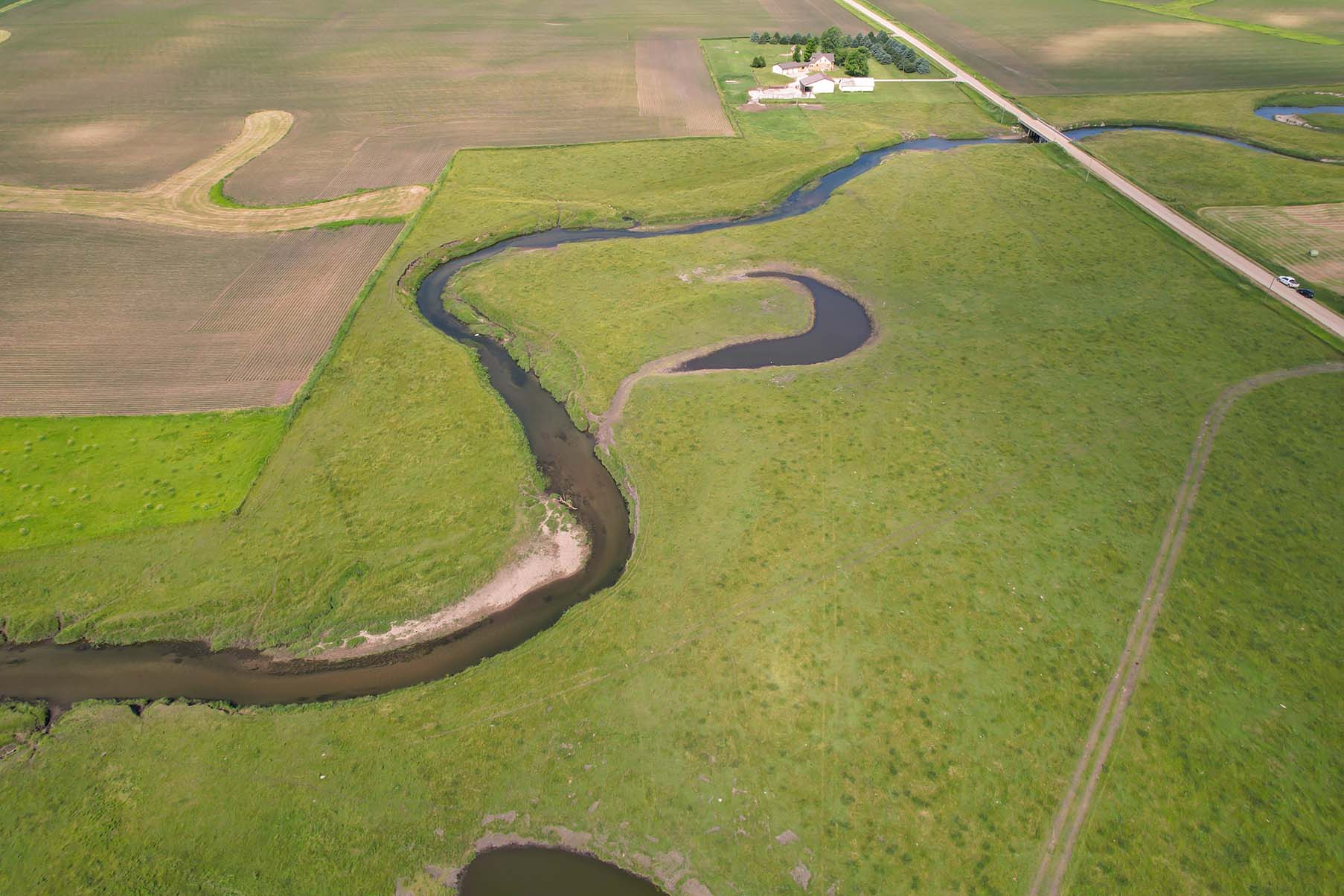
A well-crafted watershed plan protects local and downstream resources. (Photo credit: Iowa Soybean Association/File Photo)
Watershed Planning: Empowering farmers, strengthening community
March 31, 2025 | Rob Davis
Watershed planning isn’t much different than other community-based plans which reflect community priorities like drainage district maintenance, a community master plan, capital improvement plan or rural highway improvements.
The scale and scope of a watershed plan reflects the needs of the watershed. Local action occurs at the field that benefits the downstream lake, which improves water within Iowa, and ultimately the Mississippi River. But the adage “think local, act local” holds true.
Watershed planning provides farmers the opportunity to assess their land and identify what financial and technical resources might be available to make a long-planned change. This might also include working in their local community to address an emerging challenge, like flooding.
The Iowa Soybean Association (ISA) works with farmers to craft watershed plans to ensure land management goals are reflected, and rooted, in plan goals.
Creating a watershed plan
Leveraging resources is critical in crafting a watershed plan that meets the needs of all those engaged in managing, living and recreating on the land. Gaining access to additional funds, while assessing opportunities and risks for the community, presents the opportunity to also improve individual farm operations. Farmers can leverage the planning effort to understand what has changed within the watershed and review fields for opportunities to:
- reduce erosion;
- increase water infiltration and holding capacity;
- increase nutrient availability for crops, and
- decrease nutrient losses from the field.
Soil and nutrients in the field retain their value and make the entire operation more resilient. The intersection of fiscal and environmental sustainability means that assessing the opportunity to implement conservation practices can directly benefit the farm’s bottom line.
Watersheds are unlike any other local planning processes that reflect the planning needs of the community at the municipal, county or regional scale. After all, flowing water is indifferent to political boundaries. To address potential conflict, Iowa has created Watershed Management Authorities, which allow counties and municipalities to manage water resource concerns of the community collaboratively. Locally led watershed management authorities enable action by identifying resources to implement goals identified by the community.
Making a funding plan
For farmers, a watershed plan can provide access to funding to implement conservation practices.
In some instances, a watershed plan is necessary for farmers in an area to become eligible for additional funding opportunities. These funds can complement existing federal and state funding prospects.
Limited federal and state dollars mean farmers must compete; an understanding of the options improves the odds of receiving funding to get conservation on the ground. The watershed planning process prioritizes conservation practices with the greatest return, which means a list of shovel-ready projects is in hand, so farmers are in the best position to be funded when the opportunity arises.
Getting conservation on the ground has historically meant working within the traditional cost-share delivery method with design and funding delivered from agencies at the USDA Service Center. The newer “fiscal agent” model centralizes the point of contact for the farmer, and they can engage one person to handle the application and construction process.
The rapid growth of the batch and build program, which leverages this model to implement conservation practices like bioreactors, oxbows and saturated buffers, demonstrates this model’s effective approach. ISA’s conservation services team helps farmers navigate questions about these practices and provides technical assistance and access to financial assistance opportunities to implement these edge of field practices. The ISA team ensures that farmers remain the active voice from crafting the plan through selecting the in-field and financial assistance option best suited to increase conservation adoption while balancing profitability, productivity and sustainability.
Understanding the risks to your farm operation, how changes might benefit your community and the resources available to make those changes to private, working lands have economic consequences. For conservation practices to make sense, they must positively affect the farm’s profitability. As part of any business plan, the key is figuring out how to make a practice pay; a good plan answers that question.
Back